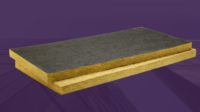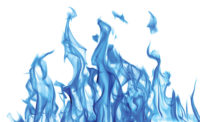Why the First Insulating Material Made the Grade
A manufacturer’s perspective on why this insulating material earned a U.S. Safety Act Designation.

In an industry renowned for creativity and an independent spirit, safety and risk management are unifying concerns shared by architects.

Several criteria are required by DHS to earn the SAFETY Act designation. These include demonstrated use, market access, addresses large or unquantifiable risk, and objective assessment.

UNPROTECTED PERIMETER JOINT An unprotected perimeter joint provides an opportunity for fire to rise.

PROTECTED PERIMETER JOINT Mineral wool insulation, at the required densities and thickness, is a tested and proven material to provide protection around perimeter joints.




In an industry renowned for creativity and an independent spirit, safety and risk management are unifying concerns shared by architects. A safety designation established by Congress in the wake of the tragic terrorist attacks of September 11 is now helping those who specify and manufacture materials for building enclosures protect occupants’ lives and professionals’ reputations.
In 2002, Congress enacted the Support Anti-Terrorism by Fostering Effective Technologies Act. The Act was driven by concerns surrounding the enormous liability risk involved in deploying security technologies and services in civilian settings. The SAFETY Act sets limits on claims resulting from an act of terrorism where Qualified Anti-Terrorism Technologies are deployed. The act covers a broad range of technologies inclusive of building products and services. It also provides powerful liability protection for commercial building professionals—including architects, engineers, contractors (both general and fire-stopping), smoke sealant manufacturers, curtain wall manufacturers and building owners—in the event of a foreign or domestic terrorist attack on a building.
To date, the Department of Homeland Security has approved more than 800 applications for SAFETY Act protections ranging from detection systems and screening services to cyber security technologies. However, until last year, no insulating material had earned the SAFETY Act designation.
In November 2017, several Owens Corning Thermafiber mineral wool products, perimeter fire barrier systems components and design, and Thermafiber Insolutions Design and Installation Services became the first insulating technologies to receive the DHS SAFETY Act designation.
And while this article cannot speak for the DHS, the manufacturer’s technical experts who worked with DHS over the six-month evaluation period identify three reasons why this mineral wool and related services made the grade.
Demonstrated Ability to Meet Stringent Criteria
Several criteria are required by DHS to earn the SAFETY Act designation. These include:
Demonstrated use. To earn the SAFETY Act designation, the manufacturer was required to demonstrate prior U.S. government use or demonstrated substantial utility and effectiveness. (During the evaluation period, the manufacturer’s insulation was shown to be installed in several U.S. federal buildings as well as institutions overseas).
Market access. As opposed to seeking innovative new approaches, the U.S. SAFETY Act sought to leverage existing technologies available in the market. An interesting aspect of the SAFETY Act Designation is that it is retroactive and provides liability protection back to December 2006.
Addresses large or unquantifiable risk. The technology must address an extraordinarily large or unquantifiable potential risk. In the case of mineral wool, the technology is an integral component in perimeter fire containment life safety systems. The only mineral wool with the SAFETY Act designation is naturally non-combustible and can withstand temperatures above 2,000 degrees Fahrenheit (1,093 degrees Celsius).
Objective assessment. The technology must be evaluated by scientific studies to assess its capability to substantially reduce risks of harm. Decades of working with organizations such as Underwriter Laboratories and Intertek/Omega Point Laboratories demonstrated the mineral wool insulation’s ability to reduce risk.
Proven Training and Education for Related Parties
The SAFETY Act designation was applied not just to the mineral wool, but to the manufacturer’s supporting design and installation services. During the evaluation process, DHS was particularly interested in the training and education provided to help related parties properly install and configure mineral wool and related perimeter fire containment system components. Here was where 45 years of experience pioneering perimeter fire containment really came into play.
The manufacturer worked with DHS to demonstrate how it applied more than four decades of experience to support proper installation. Such education is critical as insulation and related components are typically installed at the factory. After the panels are assembled, fire-stopping contractors are responsible for important steps such as installing joint material, covering and protecting parts of aluminum framing, ensuring curtain wall anchors are fully protected and more.
Mitigating Risk and Providing Peace of Mind
The U.S. SAFETY Act was inspired by concerns that liability risk would thwart the development and implementation of important and life-saving technologies. While liability is always on architects’ minds, the risk of loss due to an act of terrorism is a threat that can be easily overlooked. Using SAFETY Act designated products and services provides peace of mind to architects and related third parties such as curtain wall OEMs, smoke sealant manufacturers and fire-stop contractors. These parties are protected as long as the technology is properly installed.
At the end of the day, specifying building materials that are designated by the DHS Safety Act provides peace of mind that the installed materials are proven to save lives; and protect the architect and other commercial building professionals from liability related to an act of terrorism.
Looking for a reprint of this article?
From high-res PDFs to custom plaques, order your copy today!













